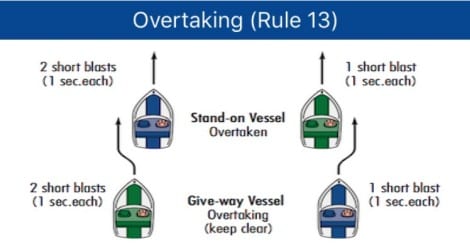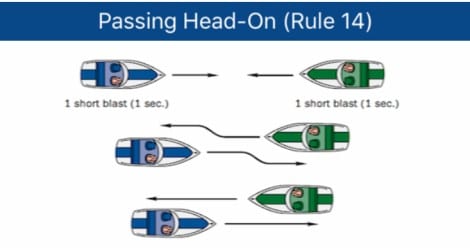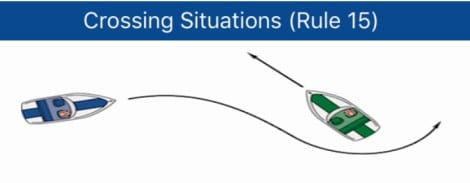 By Bob Currie, Vessel Examiner
By Bob Currie, Vessel Examiner
US Coast Guard Auxiliary Station Galveston Flotilla.
That is a little bit of an exaggeration, but this Saturday it seemed like everyone with a boat was on the water, and everyone was headed in a different direction. I was part of a team of Coast Guard Auxiliarists at Coast Guard Station Galveston who were teaching a troop of Boy Scouts how to use pyrotechnic visual distress signals. We shot off about 30 rockets as part of our demonstration, so I am sure we added to the confusion on the water even though the Coast Guard Watchstander made several Notice to Mariner announcements on the radio, which is in itself another good reason to have a marine VHF/FM radio and monitor the appropriate channels.
The Station Galveston Flotilla of the US Coast Guard Auxiliary operates out of the USCG Station Galveston base on Galveston Island. They provide assistance to the Coast Guard by providing maritime observation patrols in Galveston Bay; by providing recreational boating vessel safety checks; and by working alongside Coast Guard members in maritime accident investigation, small boat training, watch standing, and property administration.
We had great difficulty finding a good time to fire off a rocket, as we waited until there was no boat traffic off our station (at least not close enough to get hit by an errant rocket). During that time, we had plenty of opportunity to observe that many of the recreational boaters were confused about how to handle three possible scenarios that occur between boats: overtaking, passing head-on, and crossing. Although we saw no collisions, there were several instances where one was barely avoided. My closest movie analogy is the scene in Jaws where all of the people loaded up in boats and headed out at the same time to find the rogue white shark. So today’s column is dedicated to addressing those three situations as they apply to powerboats, as every boat we saw Saturday, including the sailboats, was operating under power. A sailboat operating with its auxiliary engine is a power boat under the rules.
Overtaking (Rule 13)
There are three important considerations when overtaking. The first consideration is to understand which vessel has the right of way. It is simple. Any vessel overtaking (passing) any other vessel shall keep out of the way of the vessel being overtaken. The nautical term for the overtaking vessel is “Give-way Vessel.” The term for the vessel being overtaken is the “Stand-on Vessel.” Both terms are self-explanatory. As the give-way vessel, you must give way (take actions necessary to avoid a collision), while as the stand-on vessel it is your job to maintain a constant speed and heading; that is, you stand on a steady course. Before changing course, you should make sure you are not being passed by another vessel. Many collisions occur when what should have been the stand-on vessel in a passing situation suddenly makes a turn either to port or starboard.
The second consideration is to signal to the other vessel your intent to overtake, and for the vessel being overtaken to signal that they understand. To pass on the port (left) side of the stand-on vessel, the give-way vessel first gives two one-second blasts of the horn, and the stand-on vessel acknowledges by giving two short blasts. Passing on the port side is the normal rule when there is enough room to do so. Sometimes the give-way vessel may desire to pass on the starboard (right side). In that case, the signal is one short blast.

The third consideration is executing the pass safely. If either boat operator feels that there is a risk of collision, then the horn signal to be given is five short, quick blasts of the horn. The pass should be executed only when it is safe to do so; that is, there is room to pass and the give-way vessel’s wake will not cause damage and proximity to the stand-on vessel does not pose a risk of collision. It’s just like passing a car on a two-lane highway.
Passing Head-On (Rule 14)
Unless otherwise agreed, when two power-driven vessels are meeting on reciprocal or nearly reciprocal courses so as to involve a risk of collision, each shall alter her course to starboard so that each shall pass on the port side of the other. In other words, keep right. Yes, it is that simple, but we saw several boats zig-zag as they approached each other, neither operator seeming to know what to do. The horn signal is one short blast. If there is any doubt about what the other vessel intends to do, the rules require you to take action to avoid a collision. In addition, sound the distress signal (5 short blasts).

Crossing Situations (Rule 15)
When two power-driven vessels are crossing so as to involve a risk of collision, the vessel which has the other on her own starboard side shall keep out of the way and shall, if the circumstances of the case admit, avoid crossing ahead of the other vessel. This is just like coming up to a 4-way stop on a highway, but there are no stop signs or yield signs. You just have to remember the rule: the vessel on your right has the right-of-way (otherwise it would be the left-of-way, right?).

Changes in Course or Speed
Rule 8 says that any alteration of course and/or speed to avoid collision shall be large enough to be readily apparent to another vessel observing visually or by radar, and that a succession of small alterations of course and/or speed should be avoided. You want the other operator to know your intentions. If there is sufficient sea room, alteration of course alone may be the most effective action to a close-quarters situation provided that it is made in good time, is substantial, and does not result in another close-quarters situation. The most important thing in these cases is to be aware of all vessel traffic that could potentially cause a collision with you. That is why you must have a lookout.
Summary
Safety and enjoyment on the water depend on all boat operators to know the rules of the road and follow them in order to avoid a collision. The rules of the road are quite similar to those involving automobiles, but if there is a collision at sea, you don’t just stop and exchange insurance information. There is a good chance that one or both boats will sink and a good chance of injury or death. Also, keep in mind that having the right of way on the water is not always enough. You cannot assume that the other operator knows or will follow the rules. You must act to save yourself if necessary.
For more information on boating safety, please visit the Official Website of the U.S. Coast Guard’s Boating Safety Division at www.uscgboating.org. Questions about the US Coast Guard Auxiliary or our free Vessel Safety Check program may be directed to me at [email protected]. I am available to perform free Vessel Safety Checks, and I will come to your location to perform them. SAFE BOATING!
[4-22-2019]

 Posted in
Posted in 























